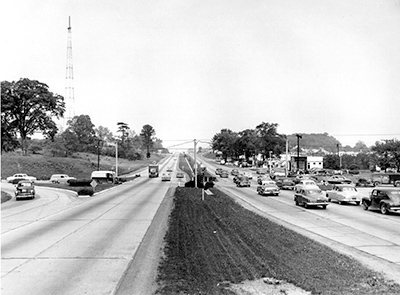
U.S. 40, Baltimore, MD, 1953, Federal Highway Administration
By the 1950s, America’s road conditions had improved significantly. It became time for the nation to begin the next stage of road development: the construction of the Interstate Highway System.

U.S. 40, Baltimore, MD, 1953, Federal Highway Administration
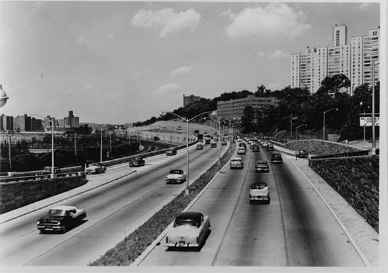
Major Deegan Expressway, 1957, Library of Congress
From his experiences on the 1919 Transcontinental Convoy and during World War II, Dwight D. Eisenhower saw the promise of a vast, interconnected highway system as a turning point in national growth and prosperity. After becoming president, Eisenhower established the Clay Committee to advise on a national highway system. He also strongly advocated highway construction in several public speeches.
"A modern, efficient highway system is essential to meet the needs of our growing population, our expanding economy, and our national security."
~ President Dwight D. Eisenhower, 1955 State of the Union Address
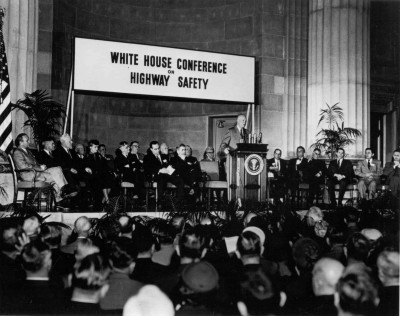
White House Conference on Highway Safety, 1954, Federal Highway Administration
As Eisenhower worked to promote the Interstate Highway System, he faced several opposing viewpoints. One came from state governors who felt that roadbuilding should continue to be controlled by the states. Eisenhower argued that the project would require a level of urgency, coordination, and funding only possible at the federal level.
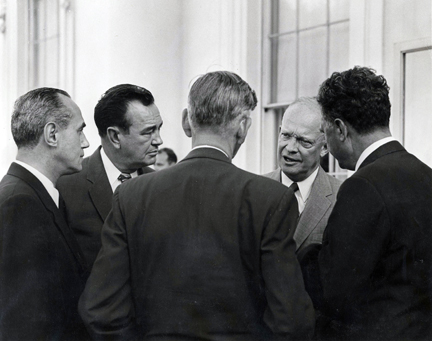
Governors with Dwight D. Eisenhower, 1954, Eisenhower Presidential Library
"I think everybody agrees that America needs roads, needs them badly, and needs them now, and they ought to be built on a coordinated, comprehensive basis, and that building ought to start."
~ President Dwight D. Eisenhower
Another opposing viewpoint came from Congress. While no one challenged the need for Interstate Highways, the issue was how to finance them. The Clay Committee proposed “A Ten-Year National Highway Program,” a financing plan primarily funded through federal bonds.
"We believed it would be a great contribution - safety of travel, to the effectiveness of travel on our highways, and to our total national economy - and that it is a capital investment justified by the returns which it would bring to the American people."
~ General Lucius Clay
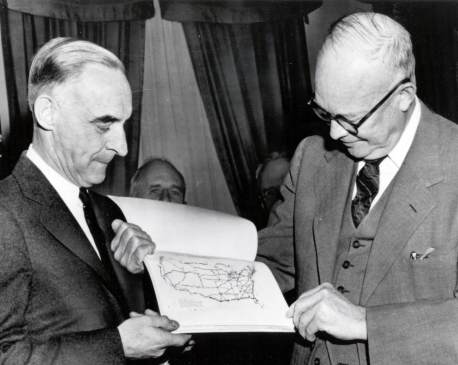
General Clay shows President Eisenhower a map of the Interstate System in A Ten-year National Highway Program, 1954, Federal Highway Administration
Many democratic leaders, such as Senator Harry Byrd, objected to the committee's proposal. They feared the plan would only force the nation deeper into debt.
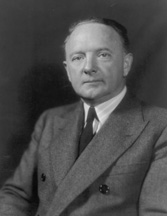
Harry Byrd, 1950, Biographical Directory of the United States Congress
"Based on all recent Federal experience, I submit it is a violent assumption to predict these bonds will be paid off at maturity. In effect, we have not paid off a single dollar of Federal debt in 25 years. Continuing increase in the Federal debt is in prospect for an indefinite period."
~ Senator Harry Byrd
Congress did not pass the committee’s plan but continued to explore alternative funding options. Ultimately, Representatives Hale Boggs and George Fallon proposed the approved financing plan involving modest tax increases on gas, tires, and other roadside services.
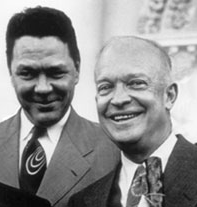
Rep. T. Hale Boggs with President Eisenhower, 1956, Federal Highway Administration
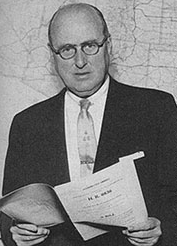
Rep. George H. Fallon, 1956, Federal Highway Administration
President Eisenhower signed the bill on June 29, 1956, paving the way for the Interstate Highway System, the largest public works project in history. Over the next 36 years, nearly 47,000 miles of highway would be constructed across every state at a cost of $129 billion, a major turning point in America’s infrastructure.
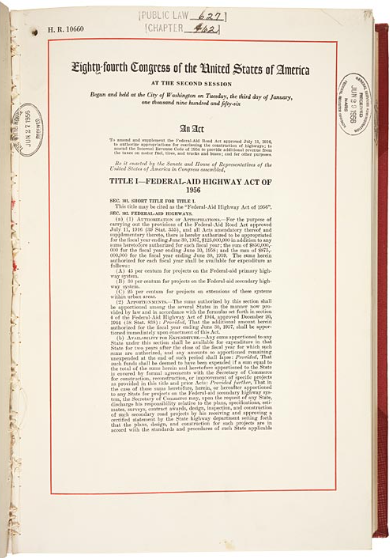
Federal-aid Highway Act of 1956, 1956, National Archives
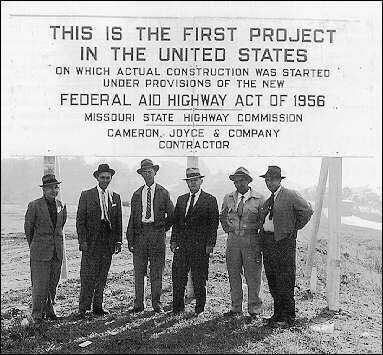
Missouri claims the first interstate highway project to begin construction, 1956, Federal Highway Administration